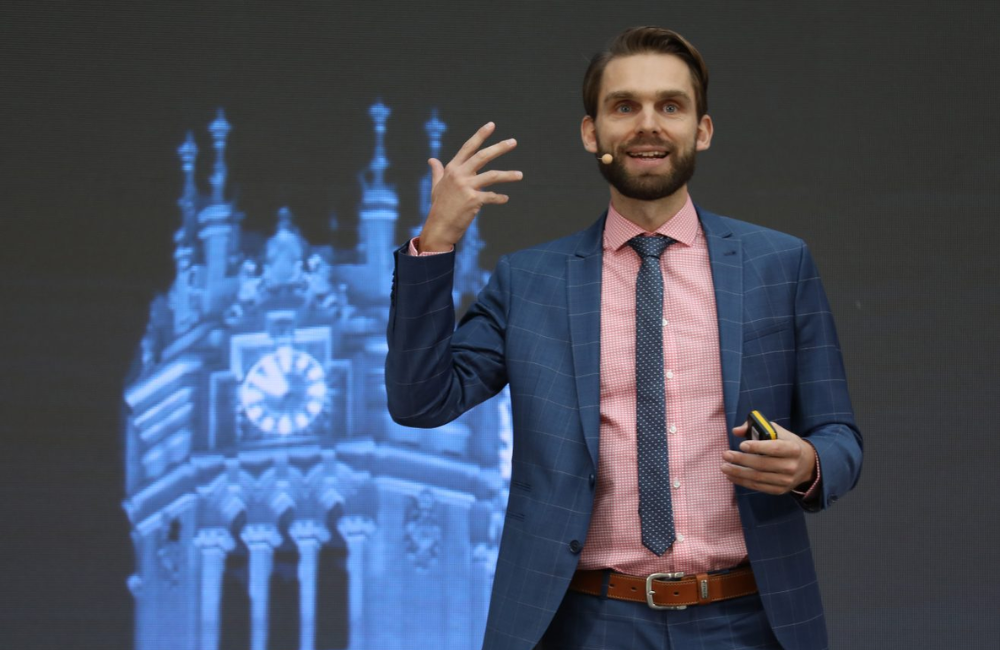Spokesperson: Louise Bou Rached, Director of Middle East, Turkey, and Africa
- What are the key objectives of Project Hafnia in transforming urban spaces using AI?
The key objectives of Project Hafnia center on creating a responsible foundation for urban AI innovation. At the core is ensuring that video data, a valuable resource in building AI models, is of high quality, responsibly sourced, securely handled, and fully compliant with evolving regulations. By doing so, the project enables the development of more accurate and transparent AI models that city authorities, businesses, and communities can trust.
Another major objective is to support governments and city planners in moving from a reactive approach to urban challenges to one that is proactive, predictive, and even prescriptive. Rather than relying solely on AI for security incident response, Project Hafnia aims to harness insights from video data to anticipate needs, manage infrastructure more effectively, and design smarter cities that improve the quality of life for citizens. This shift empowers city stakeholders to better plan for safety, mobility, sustainability, and resilience.
- How is AI shaping the planning and management of smart cities under Project Hafnia?
Project Hafnia is laying the groundwork for more accurate, adaptable, and trusted decision-making through the use of high-quality video data to train AI models. This approach not only enhances the accuracy of insights but also ensures that models are robust enough to handle rapidly changing urban challenges. With stronger foundations in data, city stakeholders can depend on AI to inform more reliable and sustainable planning.
A core element of this transformation is the deployment of Vision Language Models, which interpret and summarize visual inputs in ways that are easier for city operators and decision-makers to act upon. Instead of working with raw video streams alone, these models turn complex visuals into actionable intelligence, enabling faster, clearer understanding of unfolding events and long-term urban patterns.
Equally important is ensuring that AI solutions remain scalable and transferable across departments. Whether applied to mobility management, public safety, or emergency response, Project Hafnia emphasizes creating AI systems that can be deployed seamlessly across different use cases. This cross-departmental adaptability ensures that cities get more value from their investments, while avoiding fragmented or siloed solutions.
It’s important to emphasize that Hafnia is a new foundation for developers of advanced AI-based video analytics solutions. Hafnia itself does not build end-user solutions; rather, it serves as the facilitator and foundation, providing access to compliant data for AI model training, a dedicated AI model training environment, and the Hafnia VLM-Traffic (Vision Language Model) services, which can be integrated into developers’ analytics solutions.
- What challenges and opportunities have you encountered in implementing AI-driven urban solutions?
AI is enabling Milestone Systems to enhance both the accuracy and scalability of models by training on large volumes of real traffic data while also making use of advanced annotation and anonymization techniques. This opens the door for highly reliable insights that improve traffic flow, safety, response time, and long-term city planning. Another significant opportunity lies in public-private collaboration, where cities, technology providers, and industry partners come together to co-develop urban AI solutions tailored to specific local needs.
The potential to repurpose traffic-focused AI models for other domains such as public safety, emergency response, and infrastructure development greatly expands the value of these investments, ensuring smarter outcomes across multiple sectors.
At Milestone Systems, we recognize that cities today operate in an environment shaped by evolving regulations around data use, privacy, and AI accountability. Our approach is to design solutions that can easily adapt to these changes. We also understand that city infrastructures cannot be rebuilt overnight. That is why our AI-driven video technology is built to integrate seamlessly with existing systems, delivering immediate enhancements while laying the groundwork for more advanced capabilities over time. By prioritizing adaptability, compatibility, and gradual innovation, we help cities unlock the benefits of AI in a way that is practical, sustainable, and aligned with their long-term vision.
By licensing their existing video data to the Milestone Hafnia Data Library, cities are making an investment in the future of compliant and responsible AI model training, leading to better-performing, regulation-ready video analytics solutions.
- How do you envision Project Hafnia influencing the future of smart city development in the region?
Project Hafnia will influence the future of smart city development in the region by enabling cities to improve decision-making through AI accuracy in traffic management and long-term urban planning. By leveraging a high-quality, legally compliant video data library, city authorities gain the ability to base critical policies on reliable, transparent insights while also ensuring that data handling remains aligned with local regulations and standards. This allows governments to make confident choices in areas such as road safety improvements, mobility flow optimization, and urban infrastructure development.
Supporting Dubai’s AI Strategy 2030, the project emphasizes the importance of transparent and ethical AI deployment. By embedding compliance, privacy protection, and explainability into its framework, Project Hafnia addresses one of the key concerns of regulators and citizens alike, i.e., building trust in AI-powered city services. This approach ensures that AI adoption in public safety and urban management strengthens citizen confidence while meeting the government’s ambition of responsible and forward-looking innovation.
As an open and scalable platform, Project Hafnia provides the flexibility for AI solutions to be interoperable across diverse city departments. Whether deployed for traffic flow monitoring, emergency response coordination, environmental planning, or infrastructure optimization, the project creates a framework where each city’s use case is supported by a common, reliable foundation. In doing so, Milestone Systems helps cities move toward a truly connected smart city ecosystem, one where departments work not in silos but in collaboration, all supported by secure, transparent, and scalable AI-driven insights.








